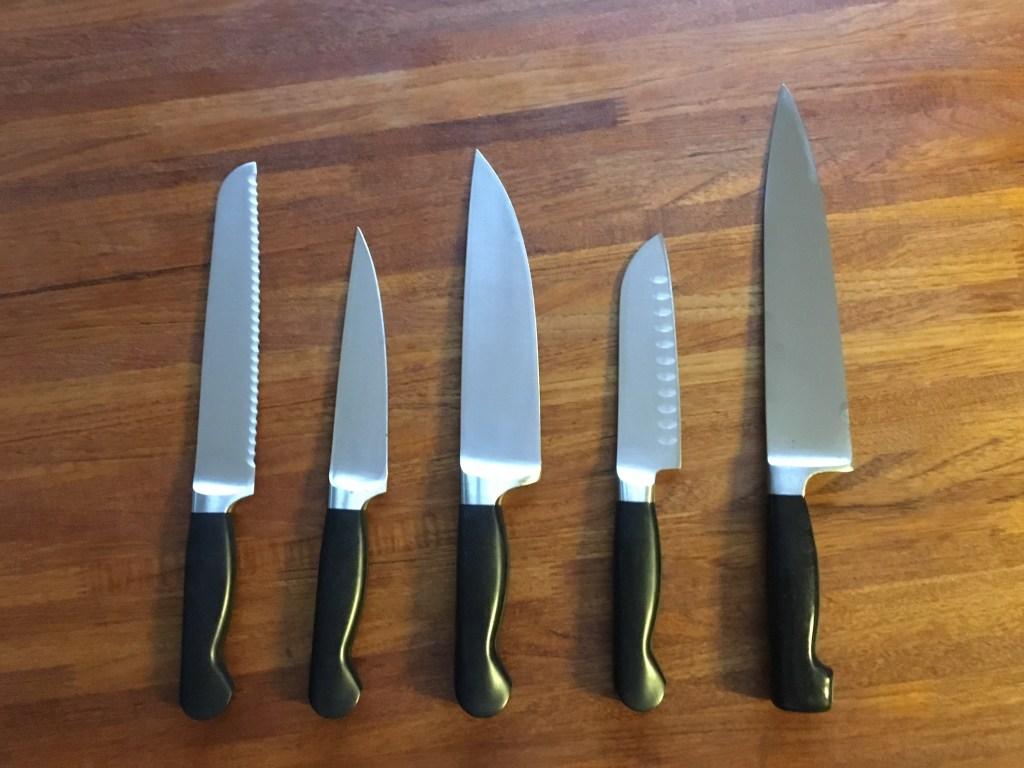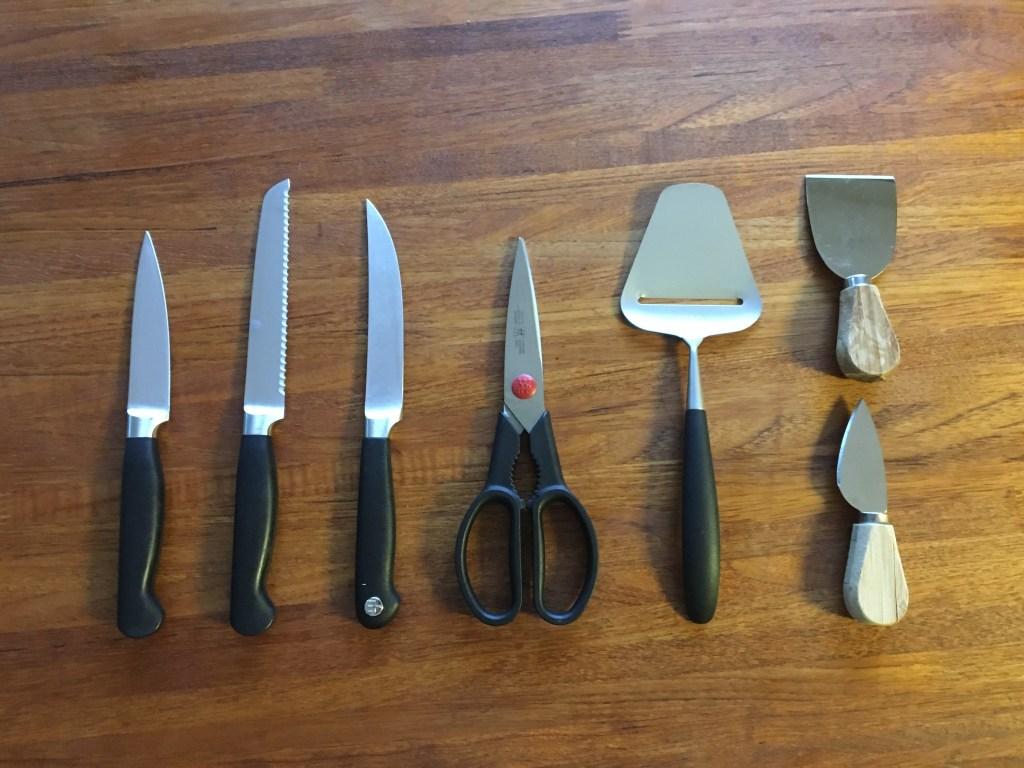- Bread Knife, Utility Knife, Chef’s Knife, Santoku Knife and Carving Knife
- Paring Knife, Serrated Paring Knife, Steak Knife, Kitchen Herb Scissors, Soft Cheese Slicer and Hard Cheese Knives
I have read that one the most important things to have in your kitchen is a good knife. A sharp knife, versus dull, will give you better control with less slippage. The latter being how easy it can be to cut yourself with a dull knife. And overall, a sharp knife is fun. Here are some knives that I think are good to have in a kitchen.
Kitchen knives are typically made of stainless steel. Though higher end knives can be made with carbon or titanium. I rely on my stainless knives. If the knives are honed every 2-4 uses, they probably won’t need sharpening for 1 to 2 years. The honing steel is usually included in most knife sets. And can be used on regular basis to keep knives sharp.
Here is a description of these knives:
The bread knife is a serrated, long and strong blade that can cut through bread with clean slices with our ripping, crushing or tearing the bread. My bread knife is 12 inches in length and it is also great for cutting fruits and veggies with a tough outer skin, such as tomatoes and figs.
The utility knife is very versatile and multi-functional. It is great for chopping and slicing fruit, veggies and small cuts of meat. My utility knife is 11 inches. And it is a very strong knife with a narrow blade. This is a good knife for slicing tomatoes, sausage and cold cuts.
The chef’s knife is the star of the show and a must have in the kitchen. The chef’s knife is a multi-purpose, wide, weighted, triangular blade that has a curved belly for easy rocking motion. This knife is the workhorse and is great for chopping, slicing, mincing and dicing. My chef’s knife is 13 inches.
The Santoku knife has a wide blade scoop for moving chopped food. The curved end helps with rocking motions when chopping. The knife edges are called graton since the groves reduce sticking when cutting moist food items. My Santoku knife is 11 inches and is excellent for preparing meat, fish, fruit and vegetables.
A traditional carving knife is long and narrow. The carving knife is great for slicing thin cuts of poultry, roasts, hams and other large cooked meats. This is where I deviate from the norm as I find it hard to slice thin cuts of meat with the traditional carving knife because it is so narrow. So, I use a version of the chef’s knife that is a little longer … mine is 14 inches. A side bar to the carving knife is to have a good carving fork to hold the meat in place. Most knife sets come with one and the fork has two sharp tines designed to penetrate meat deeply, so you are locked into the meat securely.
The paring knife is a perfect everyday knife with a fine blade, slim cutting edge and firm tip. Mine is 8 inches in length. This knife is great for mincing, peeling and coring.
The serrated paring knife is like the paring knife except it has a serrated edge. My serrated paring knife is 9 inches. It is ideal for slicing smaller sized items like bread, fruits and vegetables that have a tough outer skin or crust.
The steak knife is part of your dinner table setting should you be serving steak, roast or pork chops. I have a set of 6 steak knives that are 9 inches long. But steak knives don’t have to be used exclusively for meat, any dense food you serve will welcome the use of a sharp steak knife.
The kitchen herb scissors are great for cutting up raw meat or herbs. I use mine for anything from cutting rosemary from my garden, to cutting up bacon pieces for frying or cutting up a chicken.
The soft cheese slicer can easily make nice thin slices of softer cheeses such as cheddar, gouda or fontina.
The hard cheese knife work great to slice harder cheeses like parmigiano reggiano, pecorino romano, manchego, gruyere or asiago.
I feel there is no hard and fast rule to which knife to use in your kitchen depending on what you need to cut up. But you will find some to do the job better based on how they are shaped and how they handle. And using an appropriate knife will help with giving food appropriate texture, getting the job done efficiently, keep foods intact and keep you in safe hands.


